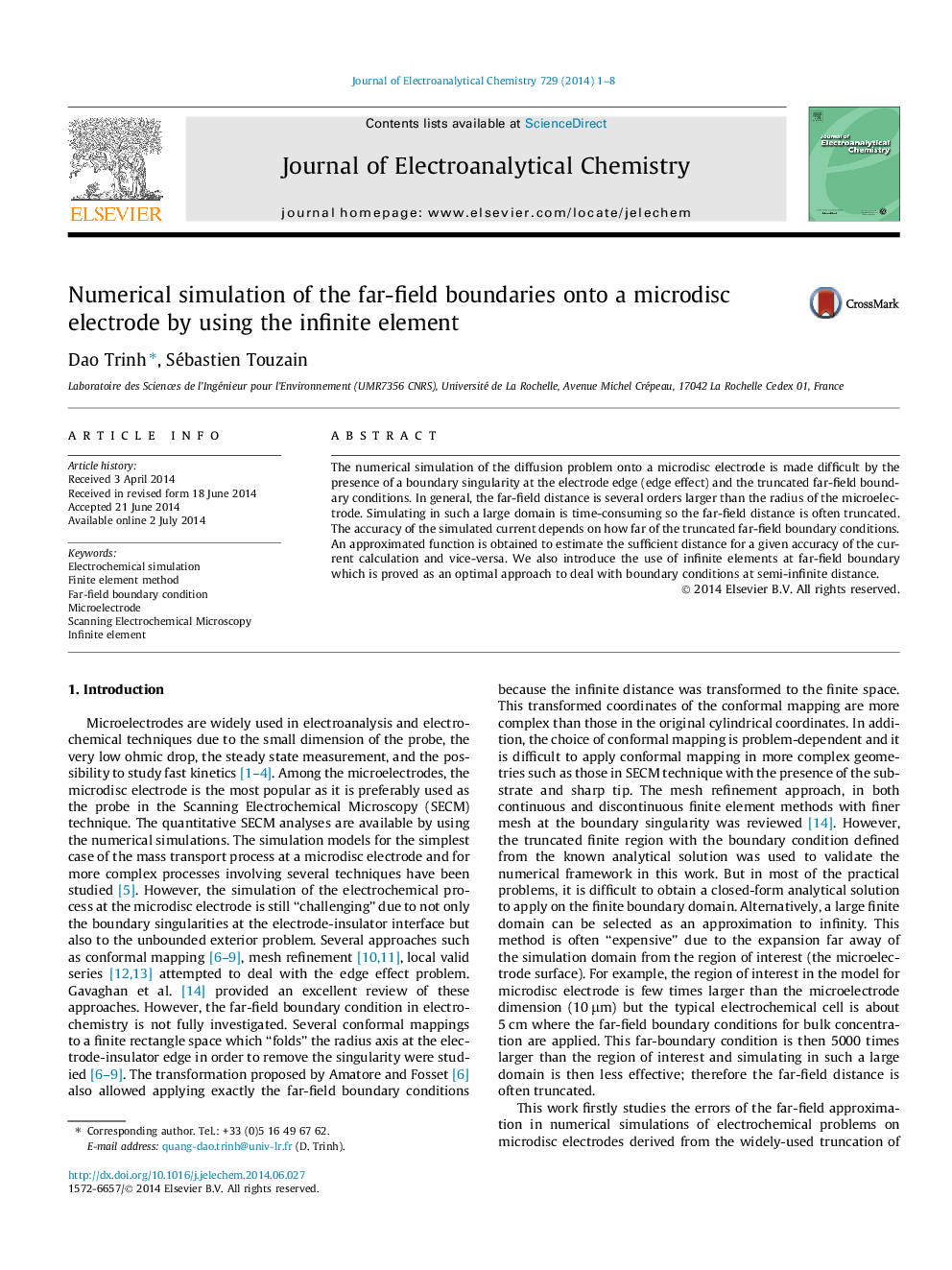| Article ID | Journal | Published Year | Pages | File Type |
|---|---|---|---|---|
| 218694 | Journal of Electroanalytical Chemistry | 2014 | 8 Pages |
•Approximated function to estimate the sufficient far-field distance for a given accuracy.•Use of infinite elements at far-field boundary in electrochemical modeling.•The simulation domain must be far at least 62 times the electrode radius to obtain 1% relative error.
The numerical simulation of the diffusion problem onto a microdisc electrode is made difficult by the presence of a boundary singularity at the electrode edge (edge effect) and the truncated far-field boundary conditions. In general, the far-field distance is several orders larger than the radius of the microelectrode. Simulating in such a large domain is time-consuming so the far-field distance is often truncated. The accuracy of the simulated current depends on how far of the truncated far-field boundary conditions. An approximated function is obtained to estimate the sufficient distance for a given accuracy of the current calculation and vice-versa. We also introduce the use of infinite elements at far-field boundary which is proved as an optimal approach to deal with boundary conditions at semi-infinite distance.
Graphical abstractFigure optionsDownload full-size imageDownload as PowerPoint slide
